Art & Exhibitions
Tiffany’s Gorgeous Glass Mosaics Get First Museum Exhibition
The mosaics are an under-appreciated facet of the pioneering designer's career.
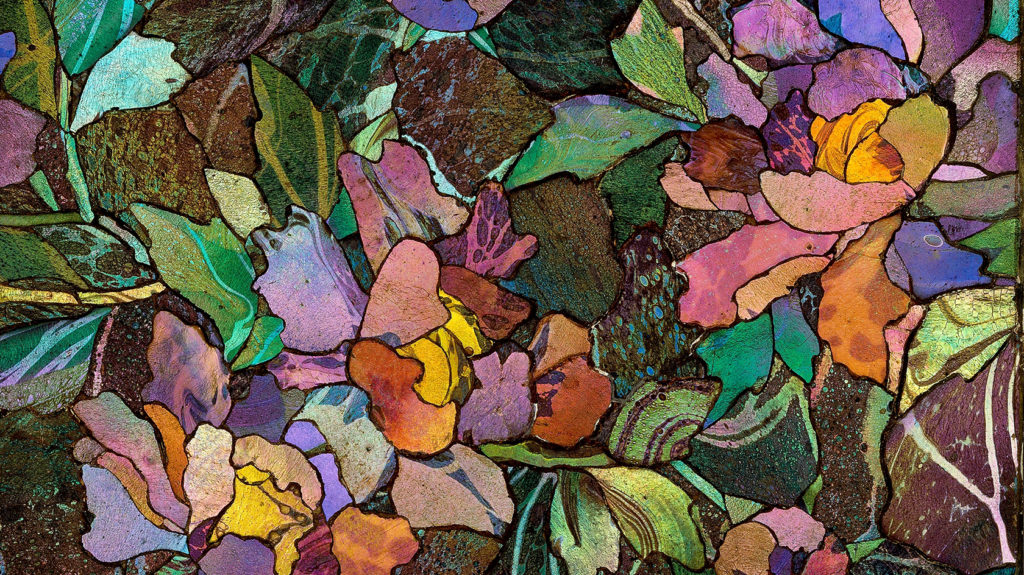
The mosaics are an under-appreciated facet of the pioneering designer's career.

Sarah Cascone

Artist and designer Louis Comfort Tiffany, a leading figure in the Art Nouveau movement, is known for his iconic stained glass windows and lamps, ceramics, blown glass, and jewelry. He’s lesser known for the stunning glass mosaics he created.
In May, nearly 50 of those works, created between 1890 and the 1920s, will appear at the Corning Museum of Glass (CMoG) in Corning, New York, the first museum exhibition dedicated to this under-appreciated facet of the designer’s career.
“Although Louis C. Tiffany is best known for his pioneering leaded glass windows and lamps, his mosaics are the culmination of his experimentation and artistry in glass,” said exhibition co-curator Lindsy Parrott in a statement. “Using a rich variety of materials, including multicolored opalescent glass and shimmering iridescent glass, accented with three-dimensional glass ‘jewels,’ Tiffany’s innovations in glass established a bold new aesthetic for mosaics and contributed a uniquely American character to the centuries-old art form.”
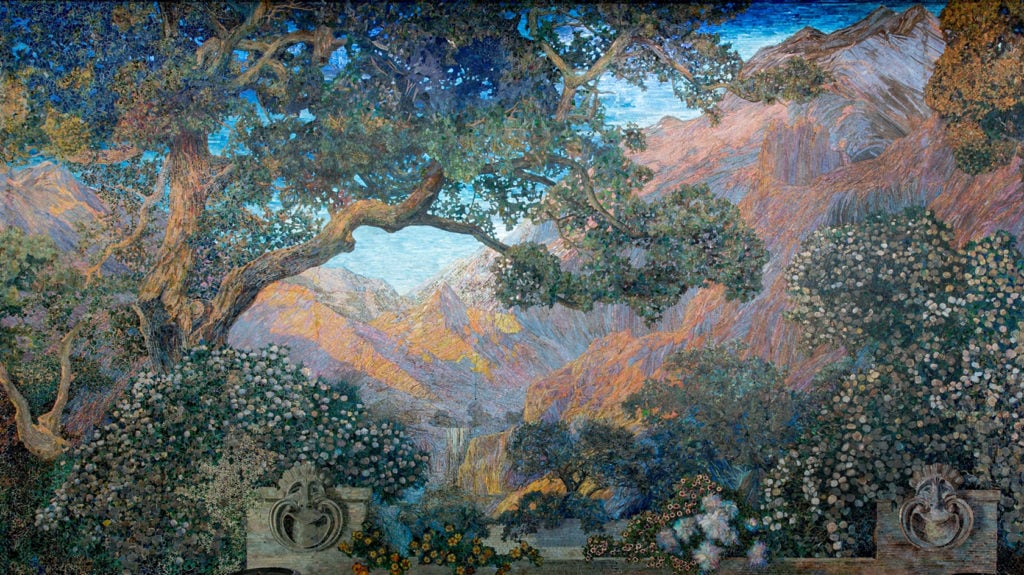
Mural, The Dream Garden (detail), 1916. Tiffany Studios. Curtis Publishing Company Building from the collection of Pennsylvania Academy of Fine Arts. Courtesy of the Corning Museum of Glass, Corning, New York.
To create these vibrant, handcrafted works, Tiffany and his studio team would begin with detailed studies, both drawings and watercolors.
The museum will present these preparatory works along with glass sample panels and archival photographs from the Tiffany showroom at the turn of the century to provide a fuller picture of the creative process.
Many of Tiffany’s glass mosaics, comprising thousands of individual glass panes, are still installed in their original homes. In order to include them in the upcoming show, the museum has gone onsite and taken high resolution photographs, which will be presented in interactive digital displays.
“The history of glass mosaics extends back more than 3,000 years, and the permanent collection at CMoG is the perfect backdrop for contextualizing the work undertaken by Tiffany’s firm to popularize this technique in the United States,” said CMoG president and executive director Karol Wight in a statement.
See more works from the exhibition, organized in partnership with the Neustadt Collection of Tiffany Glass in Long Island City, New York, below.
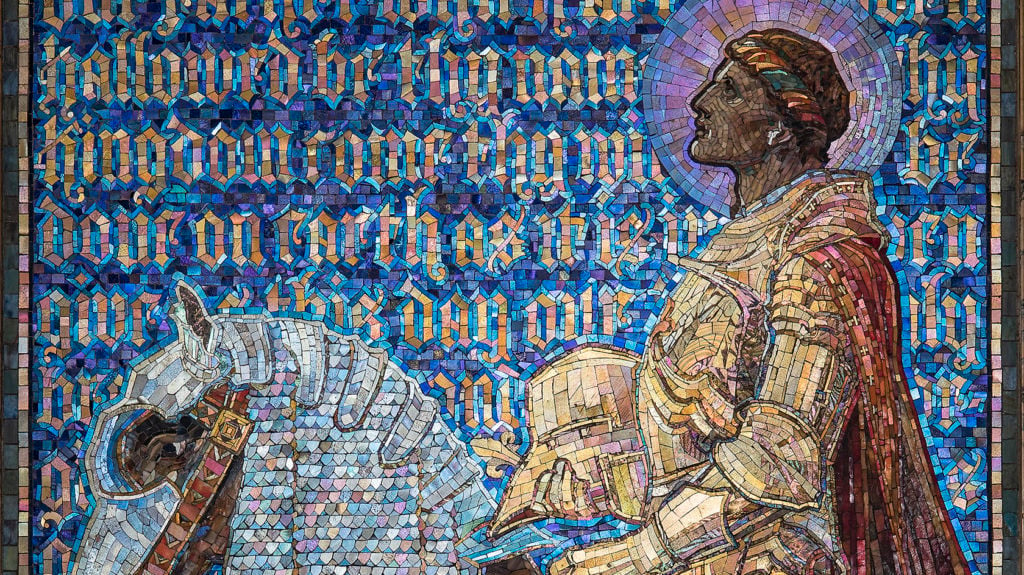
Panel, The Prayer of the Christian Soldier (detail), 1919. Tiffany Studios, designed by Frederick Wilson for the First Presbyterian Church of Binghamton, New York. Courtesy of the Corning Museum of Glass, Corning, New York.
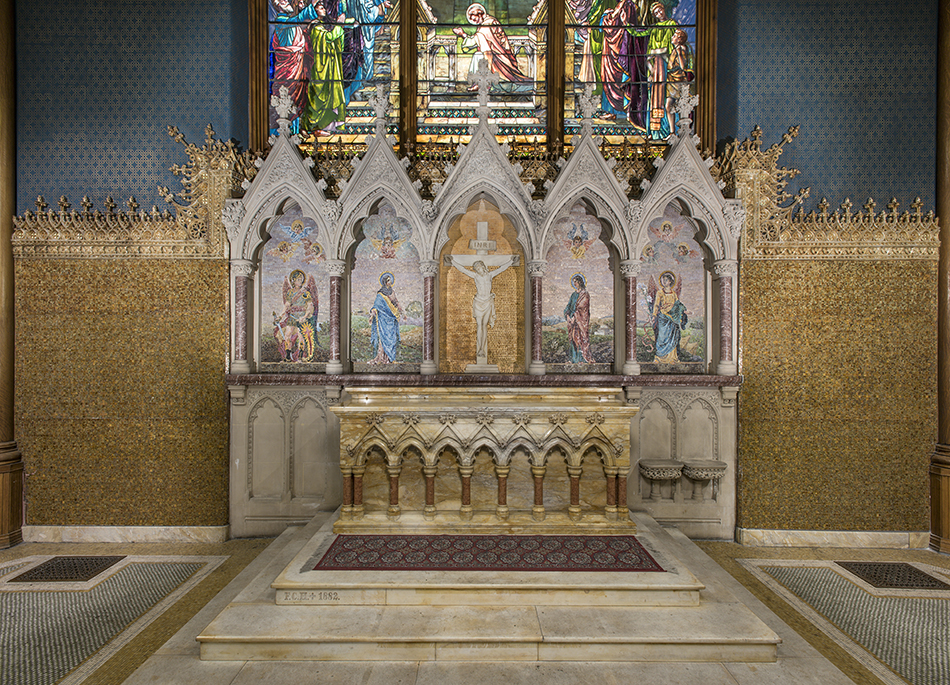
Reredos (1891). Tiffany Glass Company or Tiffany Glass and Decorating Company, designed by Jacob Adolphus Holzer for St. Paul’s Episcopal Church, Troy, New York. Courtesy of the Corning Museum of Glass.
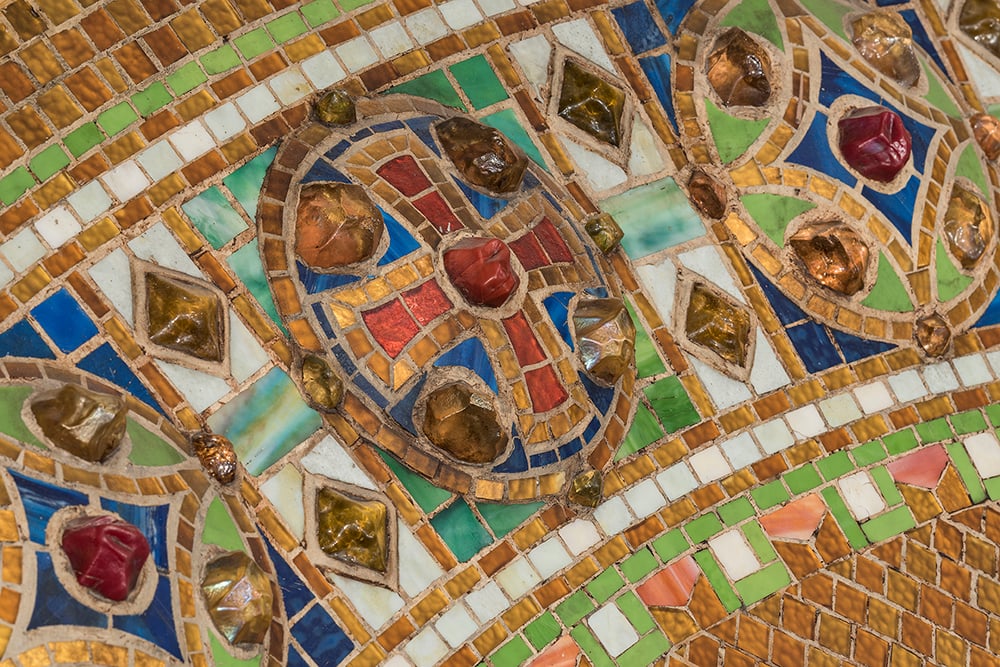
Detail of reredos with cross, after 1910. Tiffany Studios, from Christ Episcopal Church,
Corning, New York. courtesy of the Corning Museum of Glass.
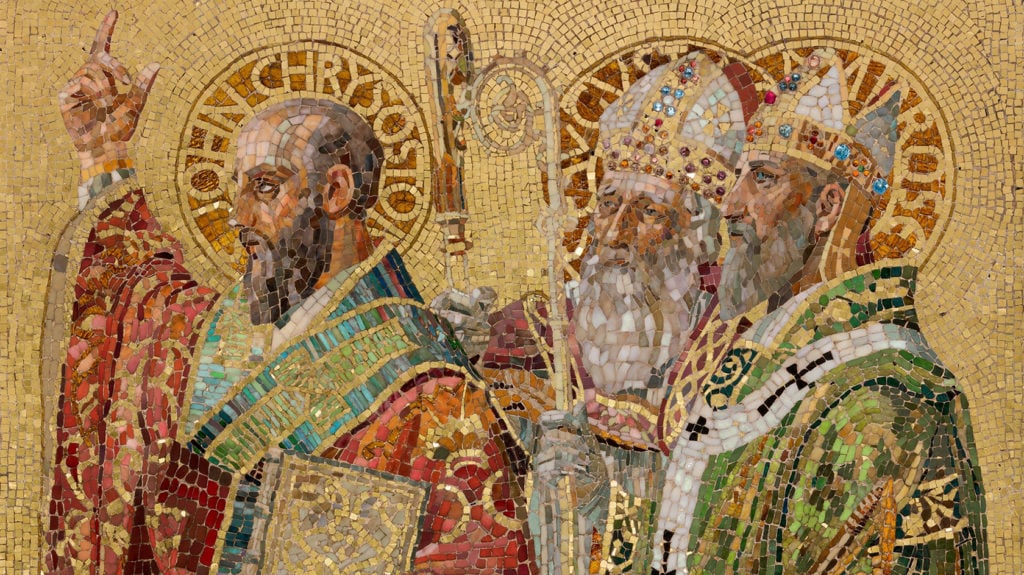
Fathers of the Church (detail), circa 1892. Tiffany Glass and Decorating Company, designed by Joseph Lauber. From the Neustadt Collection of Tiffany Glass, Queens, New York. Courtesy of the Corning Museum of Glass, Corning, New York.
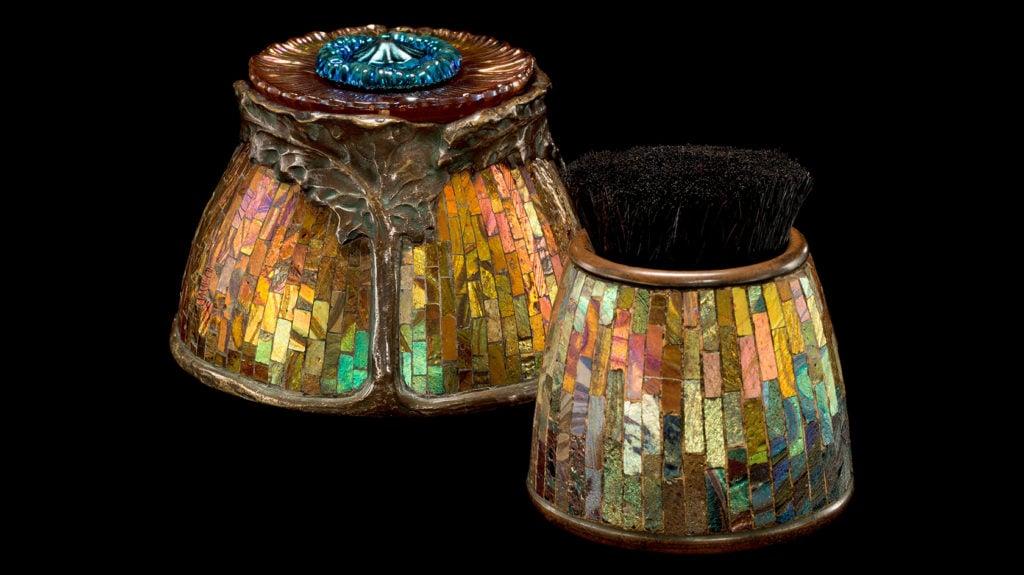
“Poppy” Inkstand, about 1901. Tiffany Glass and Decorating Company, designed by Clara Pierce Wolcott Driscoll. Courtesy of the Corning Museum of Glass, Corning, New York.
“Tiffany’s Glass Mosaics” is on view at the Corning Museum of Glass, One Museum Way, Corning, New York, May 20, 2017–January 7, 2018.